I keep making this point about procedural change often because it’s so interesting how even tiny changes lead to very noticeable changes in results.
In this mailing I’m speaking specifically about making a very simple change in the way I set up my palette for making small plein air pieces that I paint in my car.
I used to take all my paints and set up a fresh palette when I’d go out to paint. I’ve changed that to a simpler, quicker, and more efficient setup.
I wanted some way to keep the paints wet at the end of a session, so that they could be used next day. This is what I came up with.
The Tupperware container with a very tight plastic lid is 9 x 13 x 3 inches deep. I would have bought an even more shallow one perhaps 1 or 2 inches deep, but this was the shallowest one I could find. Before I set out my colors I taped in some parchment paper with bits of duct tape.
At the end of each painting session I spray on some distilled water, as well as a bit of 70% rubbing alcohol. The parchment paper holds the moisture and prevents the paint from flowing too much. The alcohol is sprayed on to prevent mold from forming while the container sits covered until the next session.
I buy the 70% alcohol in a dollar store in a bigger bottle, and decant it into this smaller spray bottle that I always take with me in the car. I’m careful not to spray too much over the paint….just a bit to discourage mold.
Now, what is the advantage to using this method?
I don’t waste any paint. I’ve had this palette going for over a month now, and every so often I add a bit of paint as it’s used up, but nothing is thrown out. I’ve had no mold forming in all this time.
It is so portable and so easy to get my materials and get moving! In the past I used to take so much with me in the car and setup and take-down took much longer. I don’t take any paint tubes with me now…I just make sure I have enough paint on my palette. For the small magnet pieces, it’s very easy to gauge how much paint I’ll need and I never run out.
The spaces in between the pure colors are used for mixing colors and these spaces are perfect for keeping useful mixes open from session to session. It is much more intuitive, quick and easy painting this way, because the color I need can be found almost in an instant.
Because of the quicker mixing, the paintings become more intuitive and somehow easier, and I notice this. It’s a very interesting thing to see! It’s likely harder for others to see this, but I notice it both in the look of the final result, and in the whole experience of painting. It’s more pleasurable to do the paintings this way because it feels almost like I’m wishing them into existence.
Here’s a very short little video showing a bit of what it’s like making these on location. They are done on archival paper that gets trimmed when dry and laid onto little panels. A strong magnet on the back makes for easy display.
So, small changes in procedure can lead to very important changes in results and your experience of the process. It is useful to always remember this going forward. You likely won’t know in advance what changes you should make to keep you going and fully motivated, but keep reminding yourself that how you set up your activity is so important to the whole enterprise. Keep inventing to help yourself out!
As always, new work produced daily gets listed to my 2 sites:


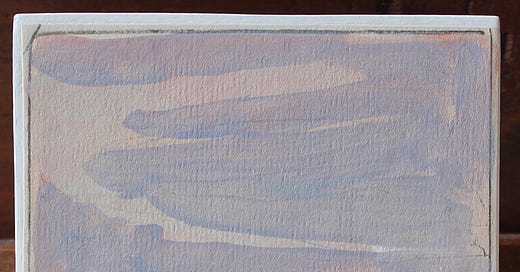




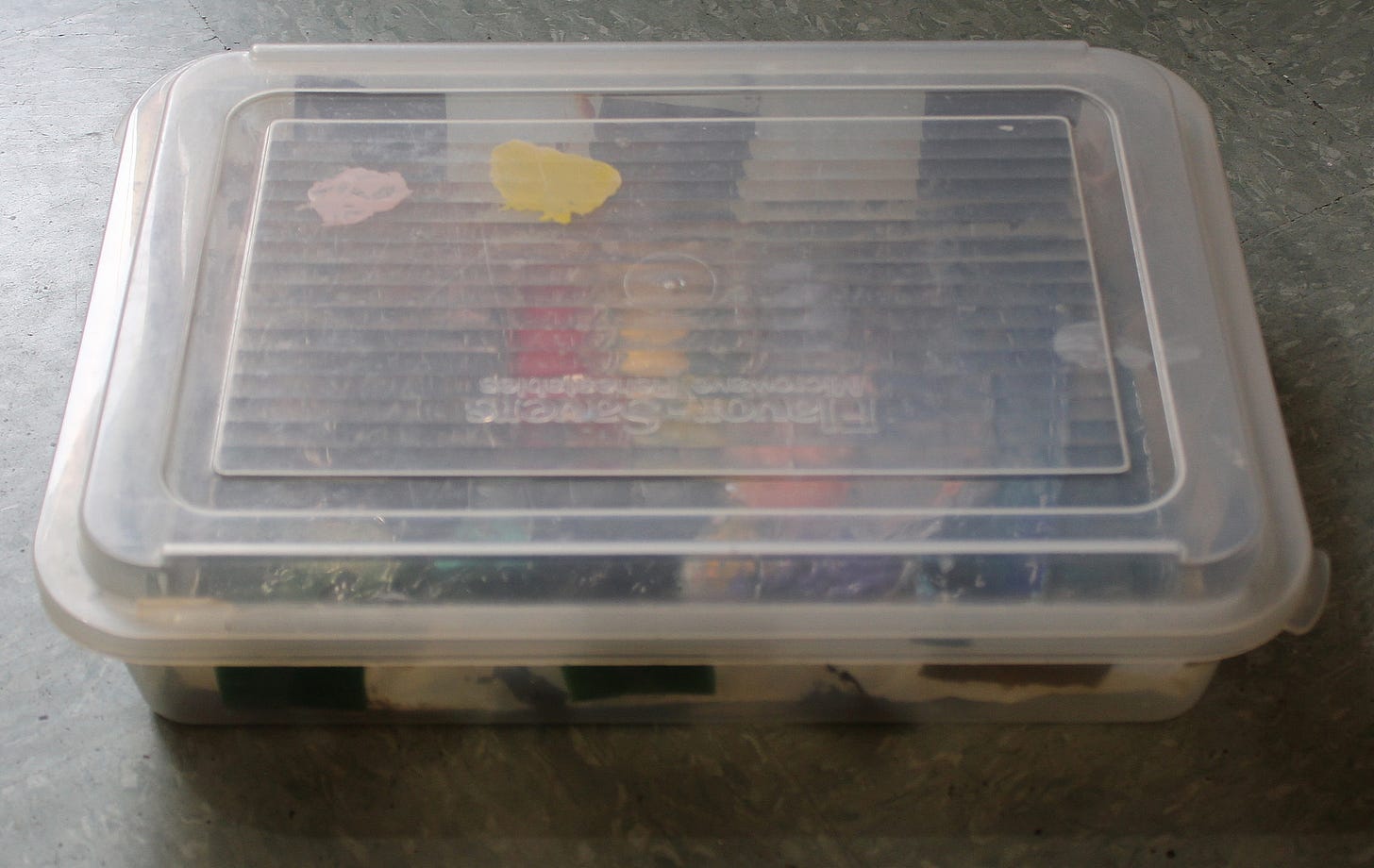
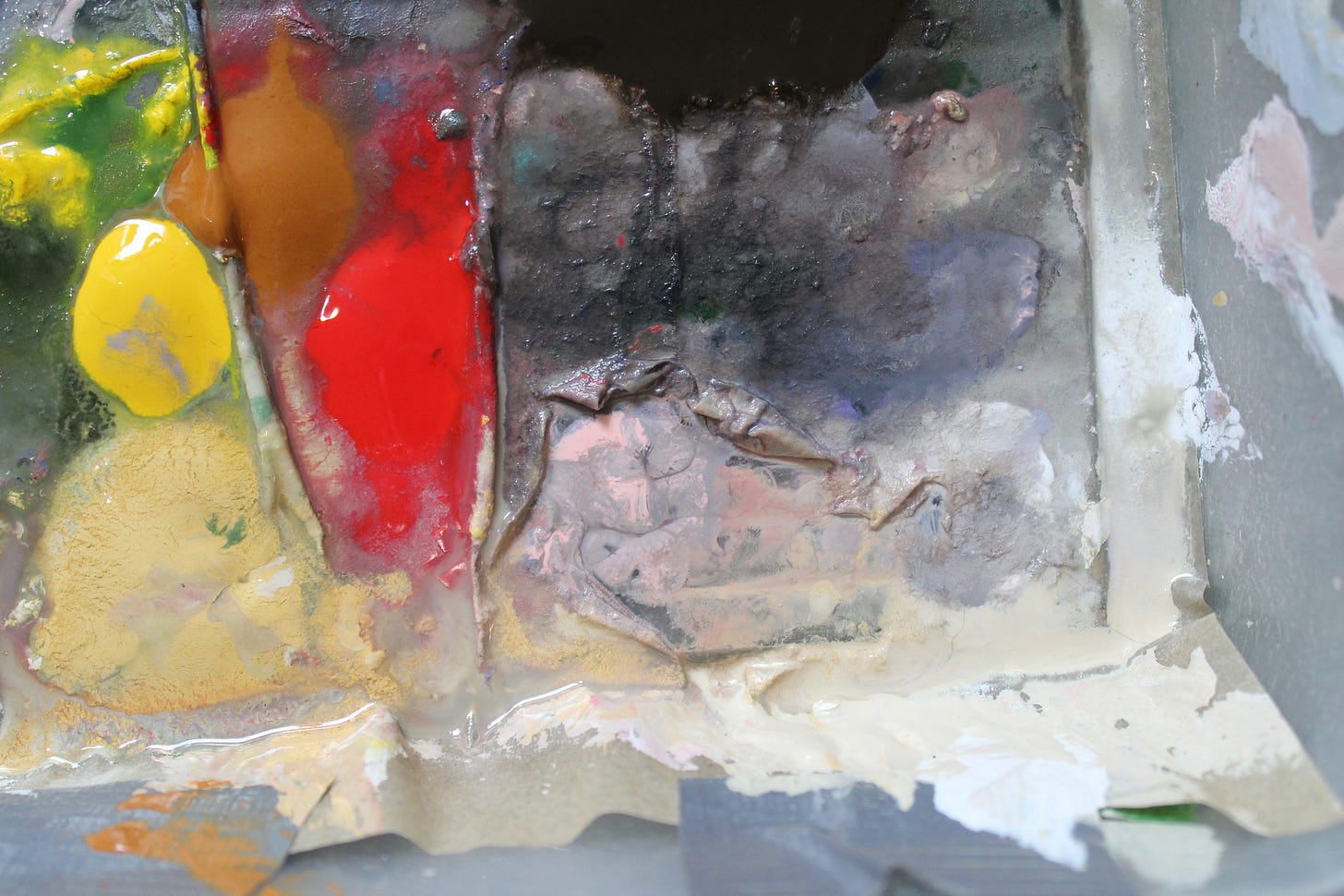
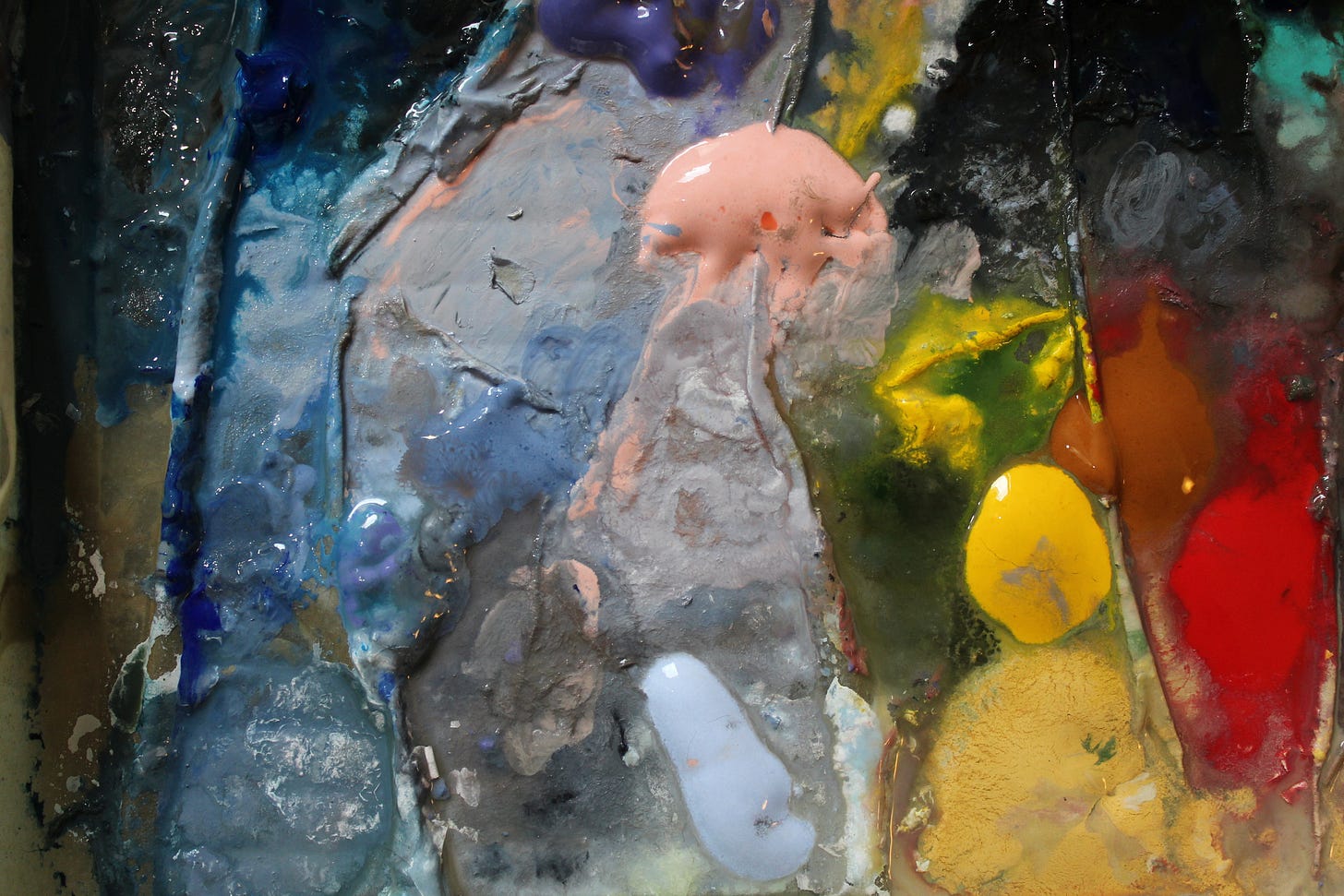
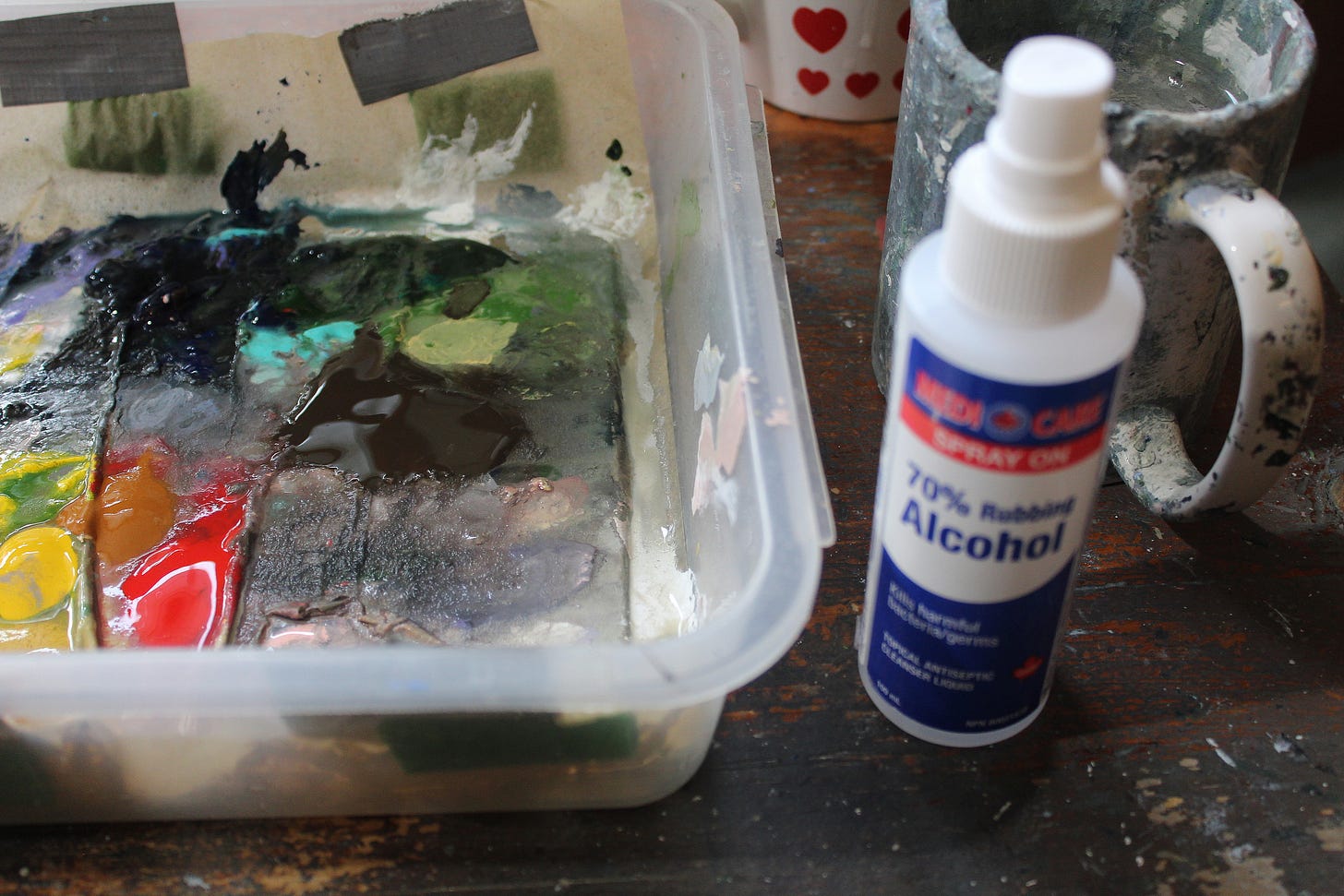
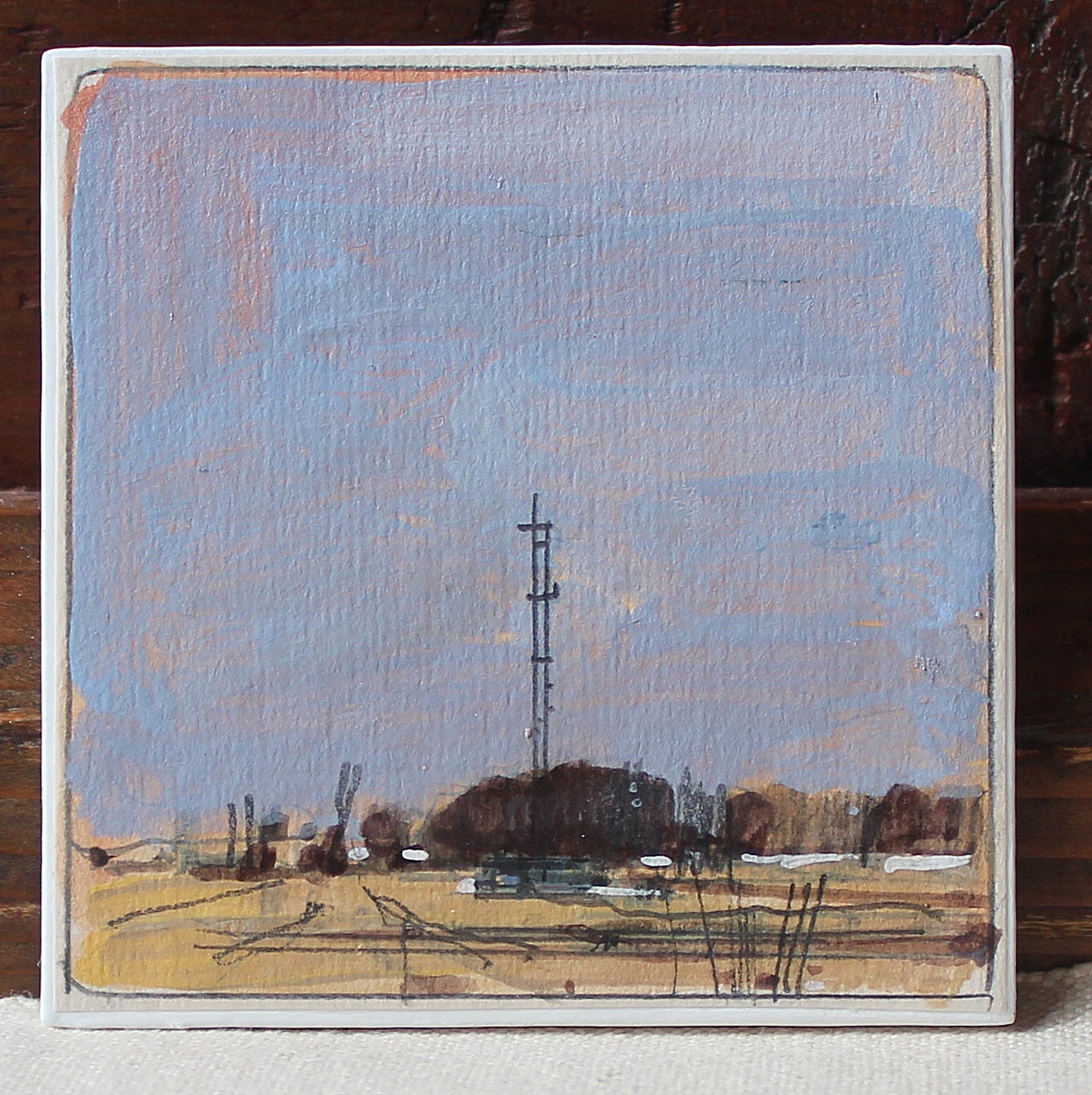
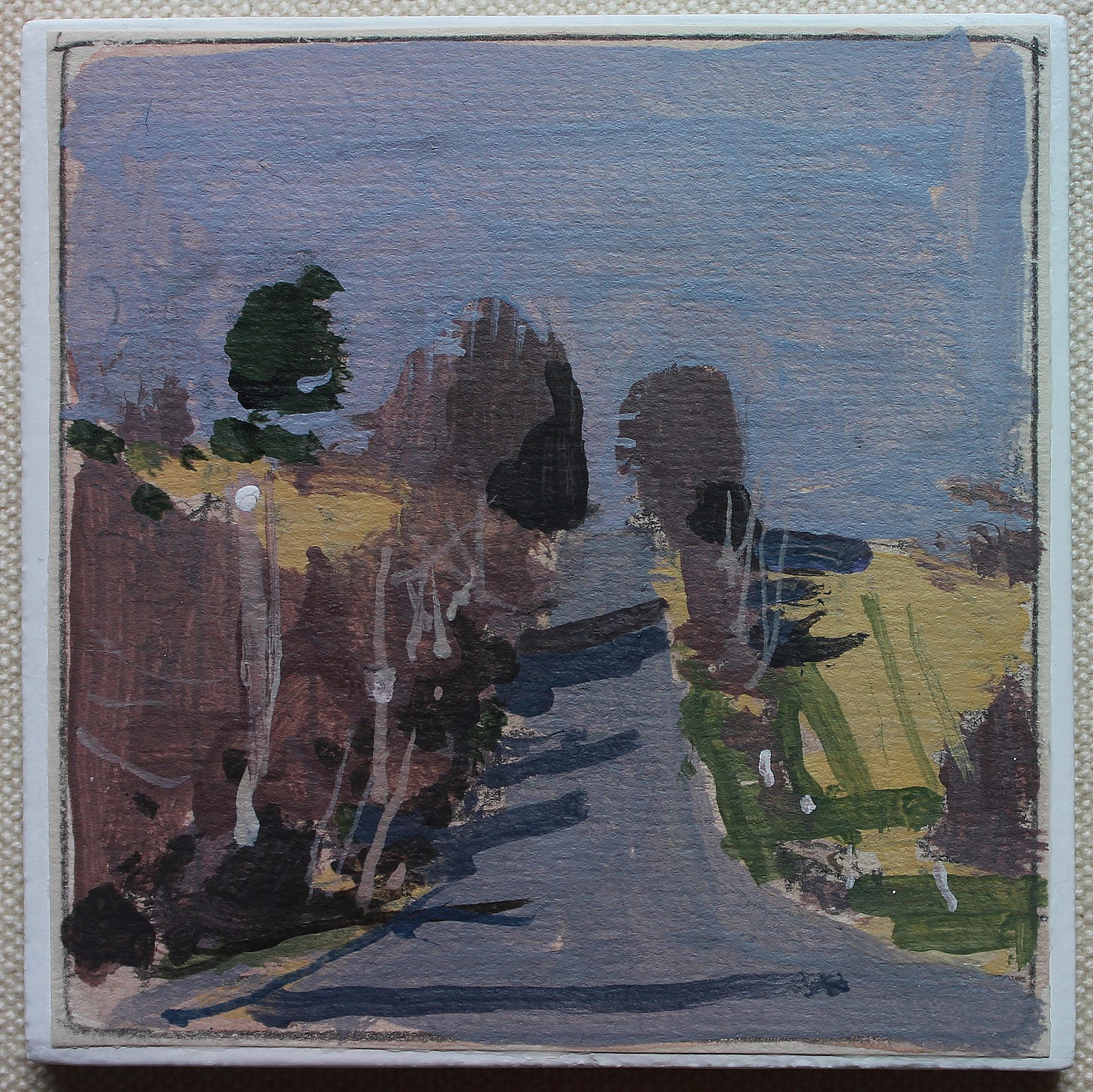
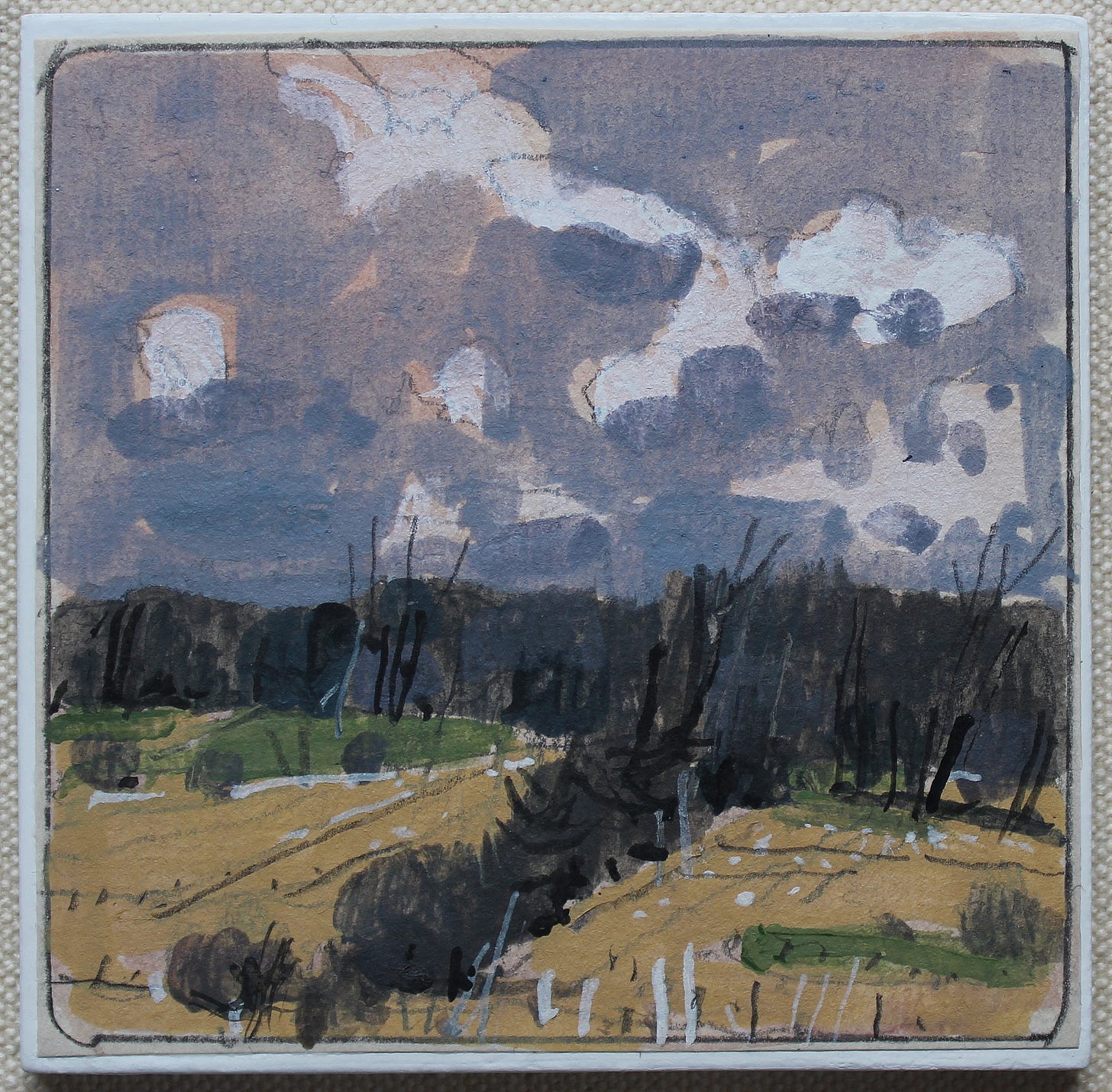
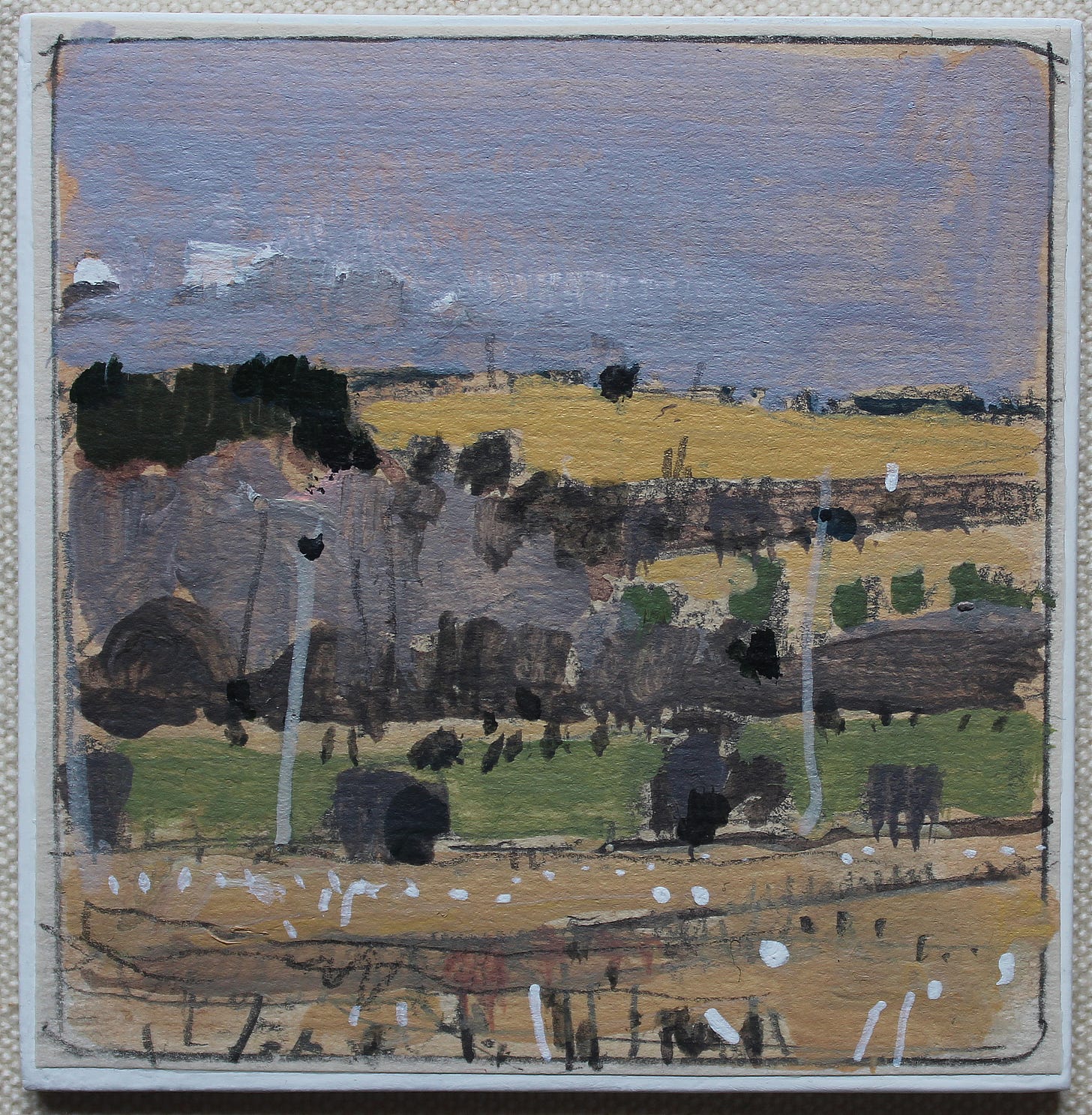
Great post — I completely agree that procedural changes can be profoundly significant. One of the simplest yet most impactful procedural shifts a painter can make is to limit the palette. I’ve recently adopted this approach for plein air work, and the benefits in terms of efficiency and improved colour harmony are considerable. Also your work is wonderful!
Thank you, Harry! Have a great weekend!